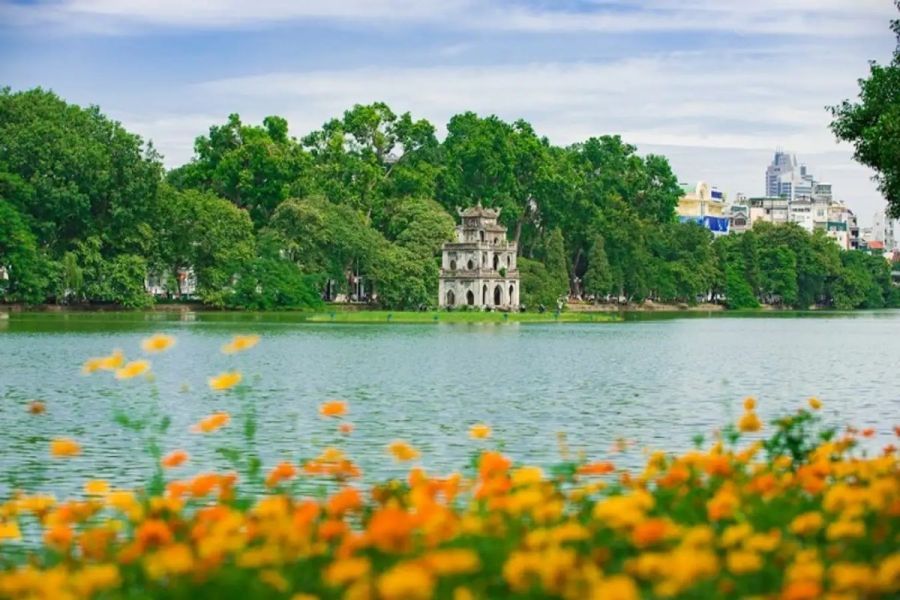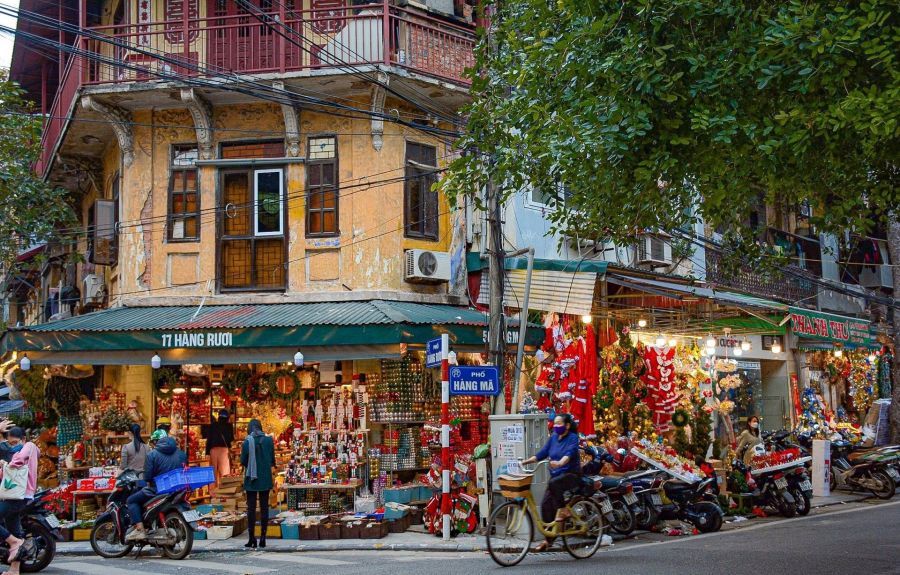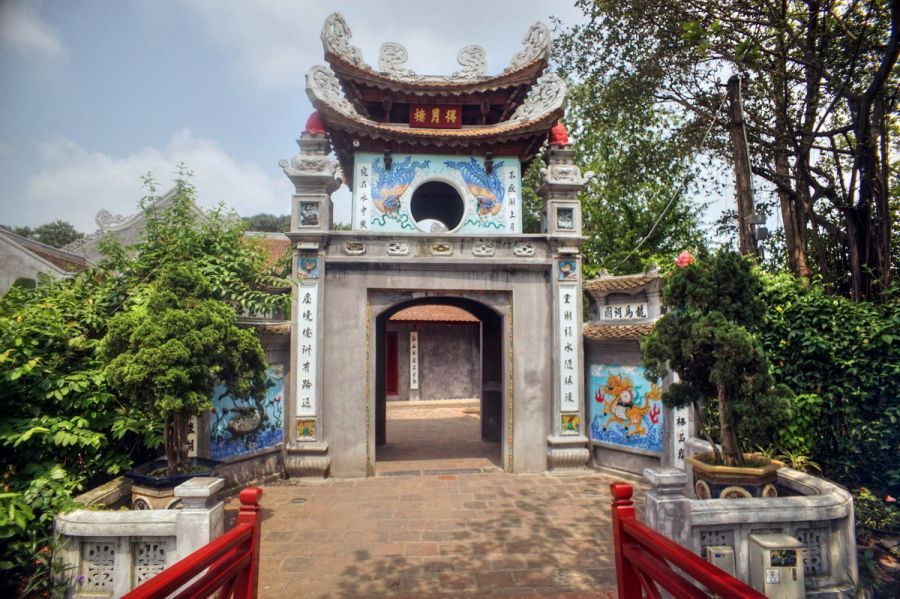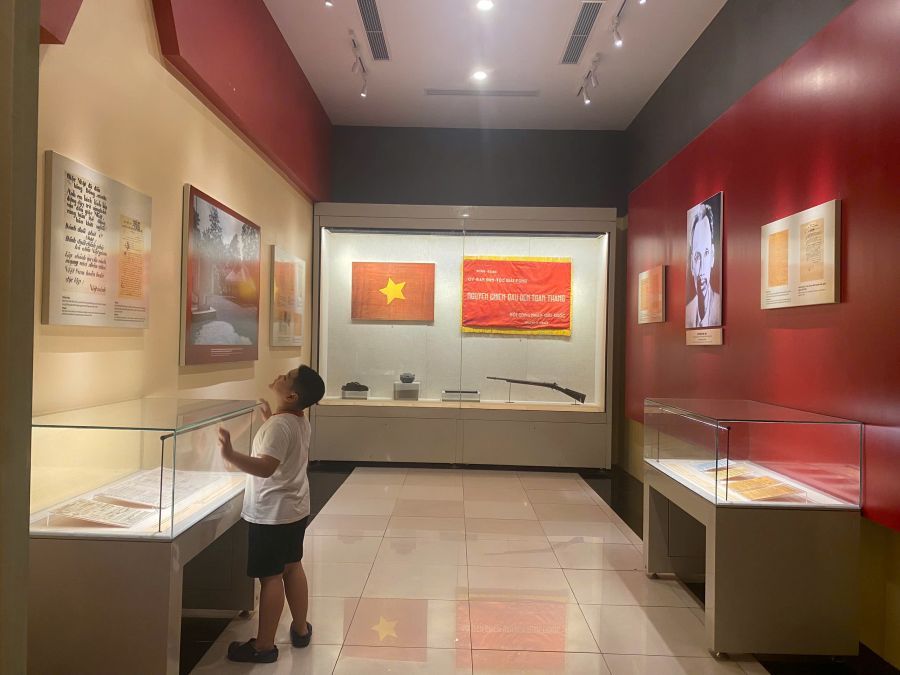Discover 11 Famous Pagodas In Hanoi For Spiritual Travel
Pagodas in Hanoi provide an oasis of gentleness amidst Vietnam’s cultural history. These sacred spaces are found throughout the city and combine ancient architecture, tranquil environments, and rich cultural history to create both sightseeing possibilities and solitary, meditative conditions.
Table of Contents
ToggleTran Quoc Pagoda
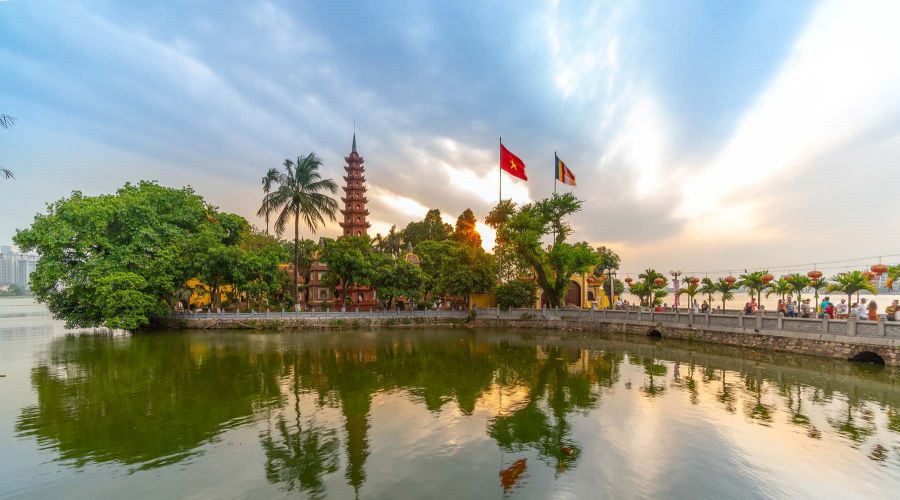
- Location: Thanh Nien Street, Yen Phu Ward, Tay Ho District, Hanoi
Located on a small island in the Eastern section of West Lake, Tran Quoc Pagoda is the oldest Buddhist temple in Hanoi, with a history of more than 1,500 years. The layout of the land is beautifully tranquil due to the waters surrounding it and greenery that fills the area, making it the perfect escape from the hectic pace of the cities, and a special spiritual place to visit for locals and tourists alike.
Tran Quoc Pagoda is notably known for its vibrant, red tower, attractive architecture, and sacred environment. People visit it for peace, prayer, contemplation, and the integrated experience of nature and antiquity, especially at sunrise or sunset, when the view is magical.
One Pillar Pagoda
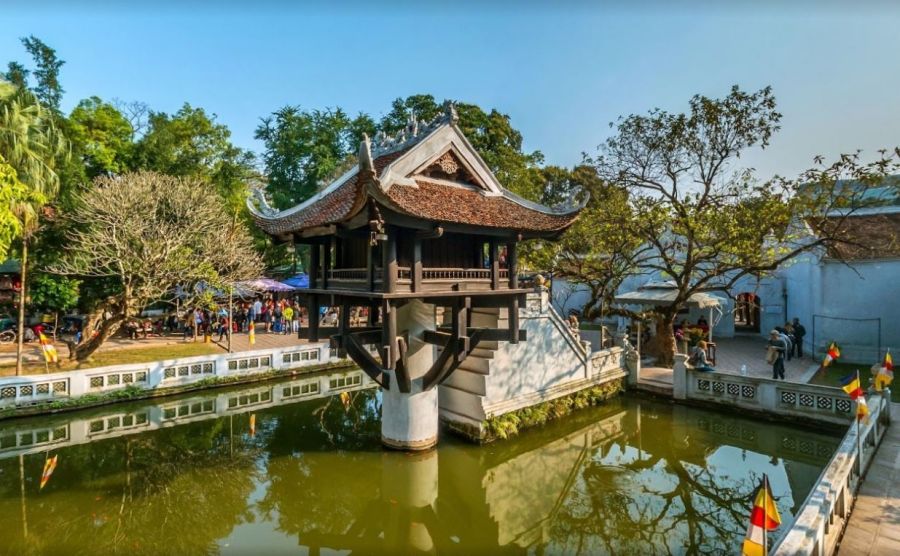
- Location: 101, One Pillar Pagoda Street, Doi Can Ward, Ba Dinh District, Hanoi
The One Pillar Pagoda, or Chua Mot Cot, is one of the most unique and famous pagodas to see in pagodas in Hanoi. Built in 1049 under Emperor Ly Thai Tong, the building was purposefully constructed to resemble a lotus flower rising from a pond – the typical symbol of purity and enlightenment in Buddhism. The story goes that the emperor dreamt of the Goddess of Mercy handing him a baby boy while she was seated on a lotus. Subsequently, this dream inspired the establishment of the pagoda.
The pagoda is relatively small, but it has cultural and spiritual importance. Visitors often visit the site to pray for health, fertility, and luck, especially during the festivities at Lunar New Year. The peaceful setting of the pagoda and the traditional architecture both make for a great place to reflect quietly. The pagoda is a smaller part of the larger complex Ba Dinh Square, which is also located a short walk from the Ho Chi Minh Mausoleum. Therefore, the site is a great stop for any itinerary while in the bustling capital of Hanoi.
Perfume Pagoda
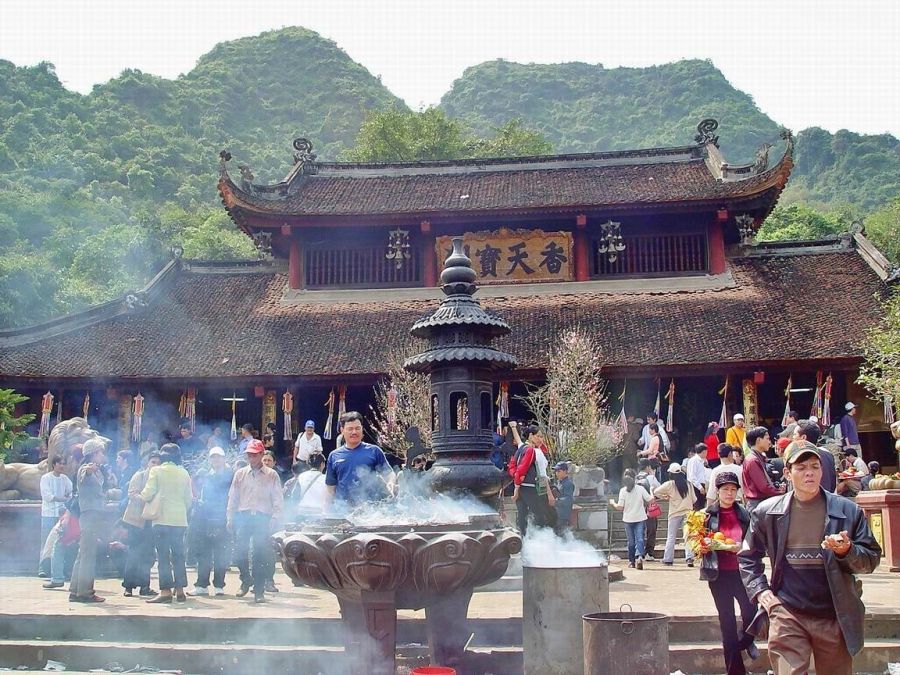
- Location: Huong Son Commune, My Duc District, Hanoi
The Perfume Pagoda, or Chua Huong, is a sprawling religious complex located about 60 kilometers to the southwest of Hanoi, surrounded by green mountains and winding rivers. There are dozens of pagodas, temples, and shrines that were constructed inside the limestone hills. The key site is the Huong Tich Cave Pagoda. Visitors commonly hire a boat along the beautiful Yen Stream to get to the complex, and it is popular, especially during the spring festival period.
The Perfume Pagoda is not only a site of pilgrimage for spiritual purposes, but a remarkable point of interest with stunning views and a way to experience Vietnamese cultural and religious history. Pilgrims climb stone steps through the forests to the top as tourists look on. The top of the mountain is a tranquil place to return home after praying for health, abundance, and good luck. The journey up the mountain is just as significant as the destination, and is often the best way to escape Hanoi.
Quan Su Pagoda
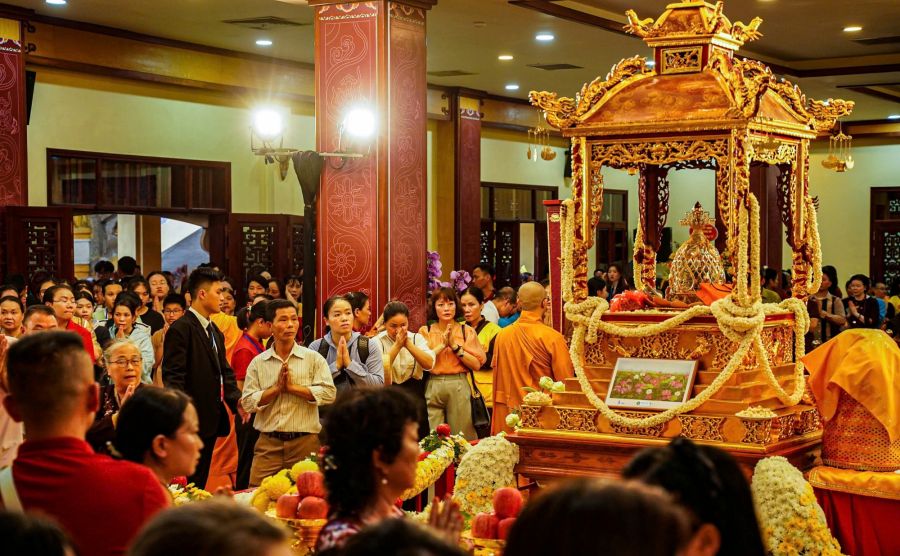
- Location: 73 Quan Su Street, Tran Hung Dao Ward, Hoan Kiem District, Hanoi
Located downtown Hanoi, Quan Su Pagoda is one of the most important Buddhist pagodas in Hanoi and is best for your Vietnam trip. Built in the 15th century as a reception area for foreign ambassadors, it became a spiritual home for monks and followers of Buddhism. This Buddhist pagoda is still used today as the headquarters of the Vietnam Buddhist Sangha, as well as a peaceful haven for daily and important Buddhist worship practices.
Everything about this pagoda represents traditional Vietnamese architecture with its beautiful and serene courtyards, structures with red-tiled roofs, and carvings delineating Buddhist history. In visiting the temple, one may take in the statues of Buddha and bodhisattvas, burn incense, and appreciate the calm and spiritual environment. A beautiful, natural sanctuary in the middle of busy Hanoi, Quan Su Pagoda is a calm getaway for guests seeking a place for meditation and cultural history while visiting Hanoi.
Van Nien Pagoda
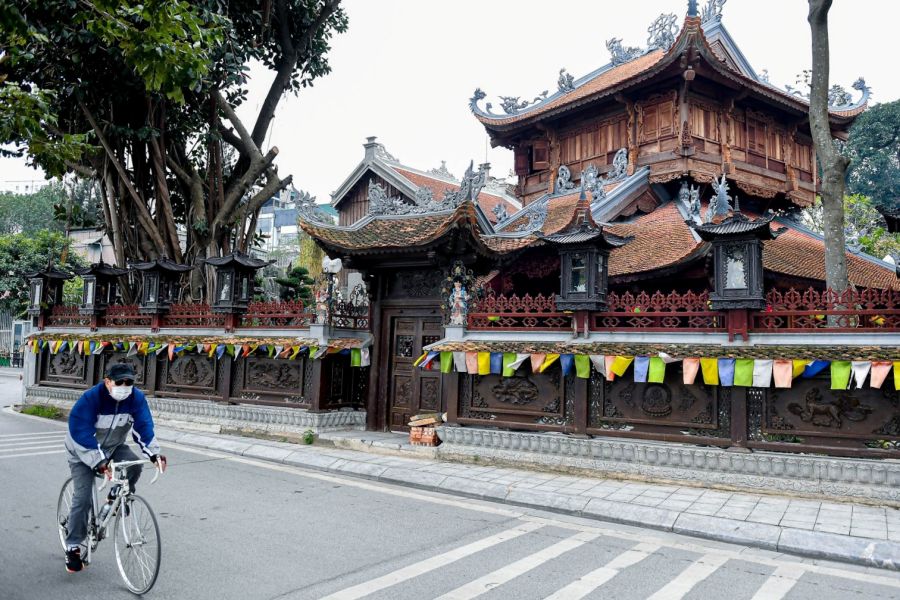
- Location: 364 Lac Long Quan Street, Xuan La Ward, Tay Ho District, Hanoi
Van Nien Pagoda, located near the peaceful West Lake in Hanoi, is one of the oldest Buddhist pagodas in Hanoi with a history of more than 1,000 years. Built during the Ly Dynasty, the temple features exquisite architecture, mossy tiles, and bold Bodhi trees that have been around for centuries, all of which contribute to a lovely, peaceful ambiance.
This ancient temple serves as both a site for spiritual worship and a site of cultural heritage, which the locals frequently visit to pray for peace and prosperity. Inside are exquisitely carved wooden statues and altars devoted to Buddhas and deities. Van Nien Pagoda is a perfect spot for anyone who loves history and seeks some tranquility away from the hustle of the city.
Ha Pagoda
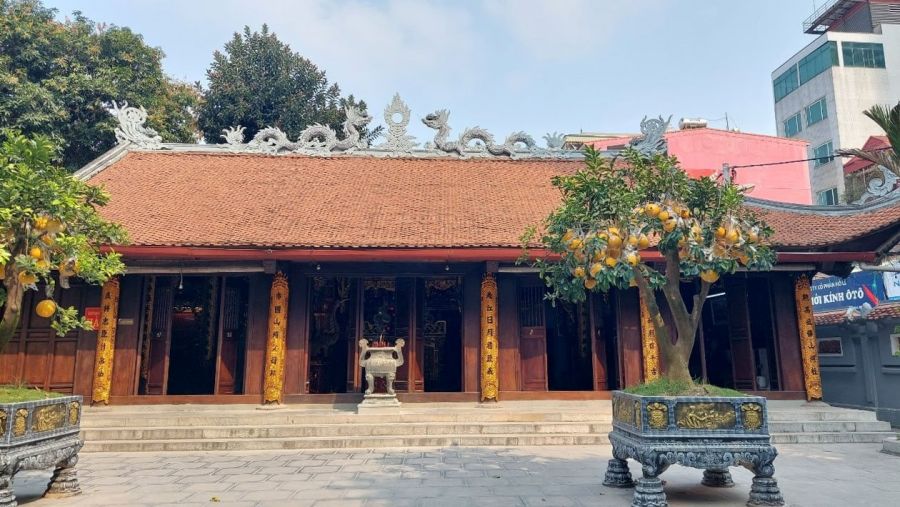
- Location: 86 Chua Ha Street, Dich Vong Ward, Cau Giay District, Hanoi
Ha Pagoda, located in Cau Giay District (Ha Noi), has a reputation as a spiritual site and is popular, especially among young people who come to pray for love and relationships. The peaceful environment and elegant architecture make the pagoda a popular site to visit to pray for love or rekindle emotional ties.
As with a number of pagodas in the area, Ha Pagoda has a significant cultural and historical background dating largely to the Ly Dynasty. Many visitors come to the pagoda to light incense, make offerings, and conduct heartfelt prayers. Whether visiting as a couple or single, many consider the visit to Ha Pagoda a sign of good luck and love happiness.
Boc Pagoda
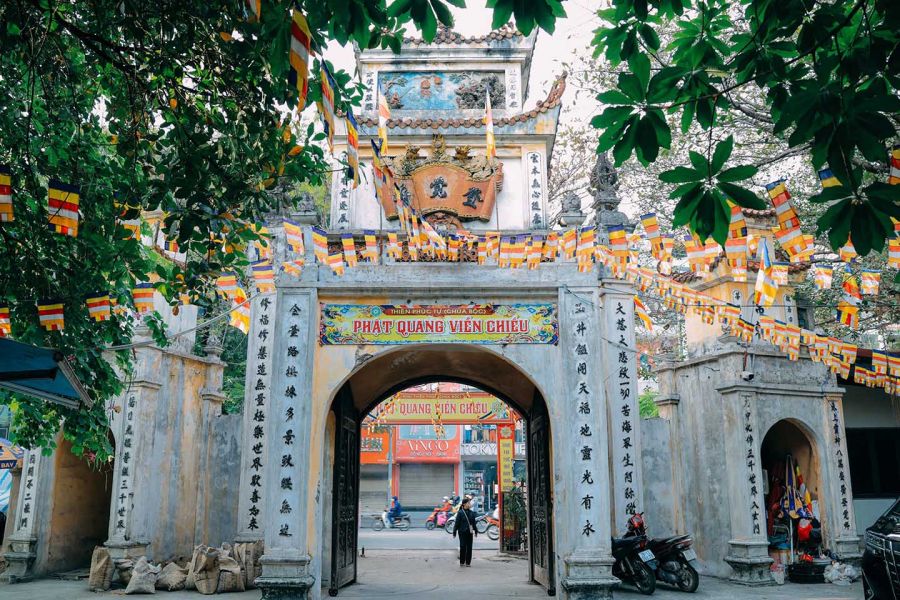
- Location: 14 Chua Boc Street, Quang Trung Ward, Dong Da District, Hanoi
Boc Pagoda, or Quan The Am Temple, located in Dong Da District of Ha Noi, is an ancient pagoda built to celebrate the victory of King Quang Trung in the Dong Da battle in history. The pagoda is peaceful with beautiful wooden architecture, making it significant for worship and for the historical significance the site occupies.
The pagoda is dedicated theoretically to Buddha, and theoretically also to national heroes. This provides the site with an unusual combination of spiritual importance but also patriotic significance. Visitors come to this site to pray for peace and health, but also as a way of remembering the past. Boc Pagoda is a unique and quiet area in a busy city.
Lang Pagoda
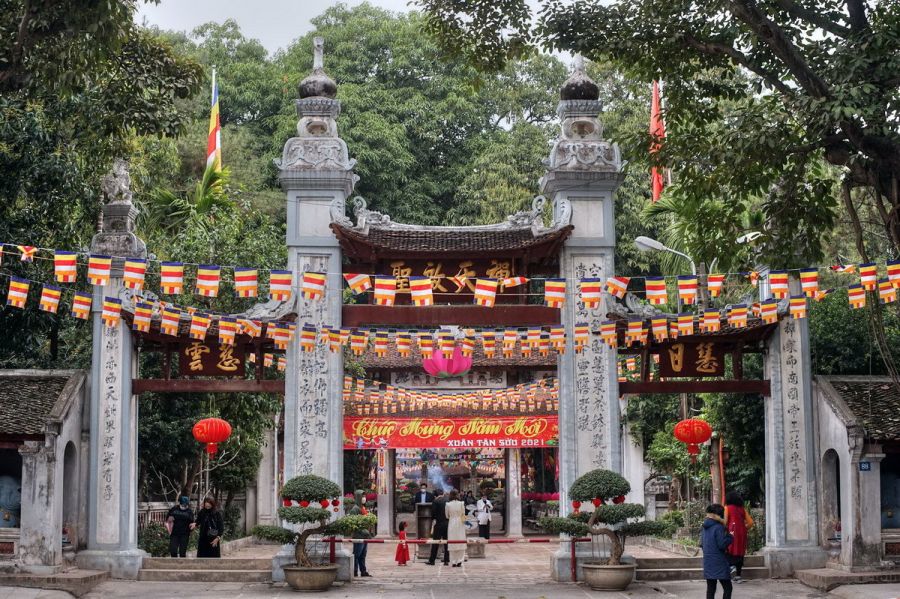
- Location: 116 Chua Lang Street, Lang Thuong Ward, Dong Da District, Hanoi
Lang Pagoda is the oldest pagoda in Hanoi, located in Dong Da District, and can be traced back to the 12th century. It was built to honor Zen Master Tu Dao Hanh, a significant monk who had a remarkable impact on Buddhism in Vietnam.
Nestled in the lush green growth of urban growth, and maintaining traditional and ancient Vietnamese architectural styles, the Pagoda offers the opportunity to escape the rush of the city and emphasizes the overall specialness of the Pagoda. A cultural and historical site and a religious place of worship show the religion’s powerful role in East Asian cultures. Furthermore, Lang Pagoda, or more generally, pagodas, represent significance in Vietnam.
Phap Van Pagoda
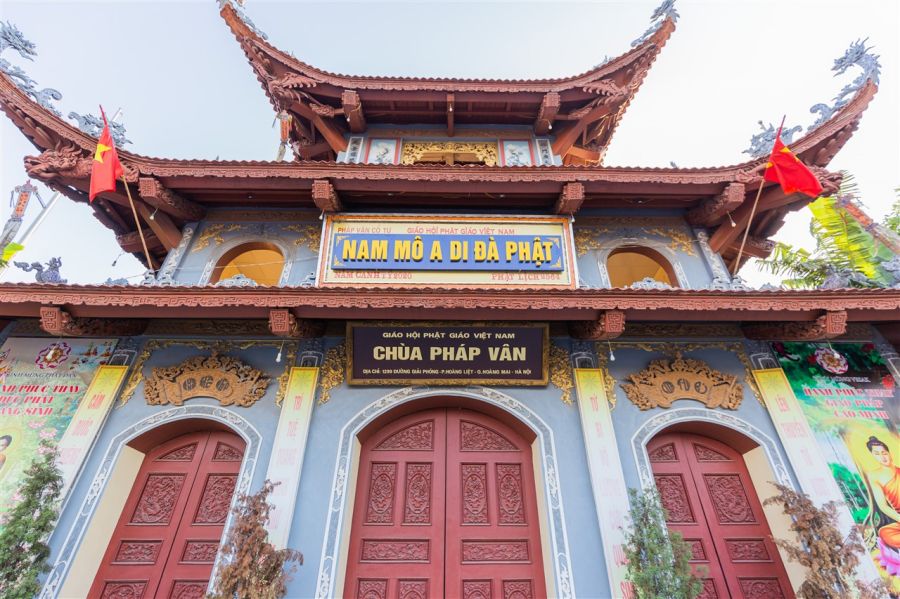
- Location: 1299 Giai Phong Street, Hoang Liet Ward, Hoang Mai District, Hanoi
Phap Van Pagoda, situated in Hoang Mai District of Hanoi, is a popular religious site with a peaceful space, beautiful architecture, and an aura that is perfect for personal reflection and prayer. The pagoda is built in the traditional Vietnamese style, with beautiful statues, calming courtyards, and a religious atmosphere where one can observe a sacred space.
During the Lunar New Year and important Buddhist holidays, however, this site is filled with Vietnamese families looking to pray for peace, health, and prosperity. The calm atmosphere of Phap Van Pagoda connects to sentiments embraced by Vietnamese culture and provides a calming space for visitors to be part of something much larger.
Kim Lien Pagoda
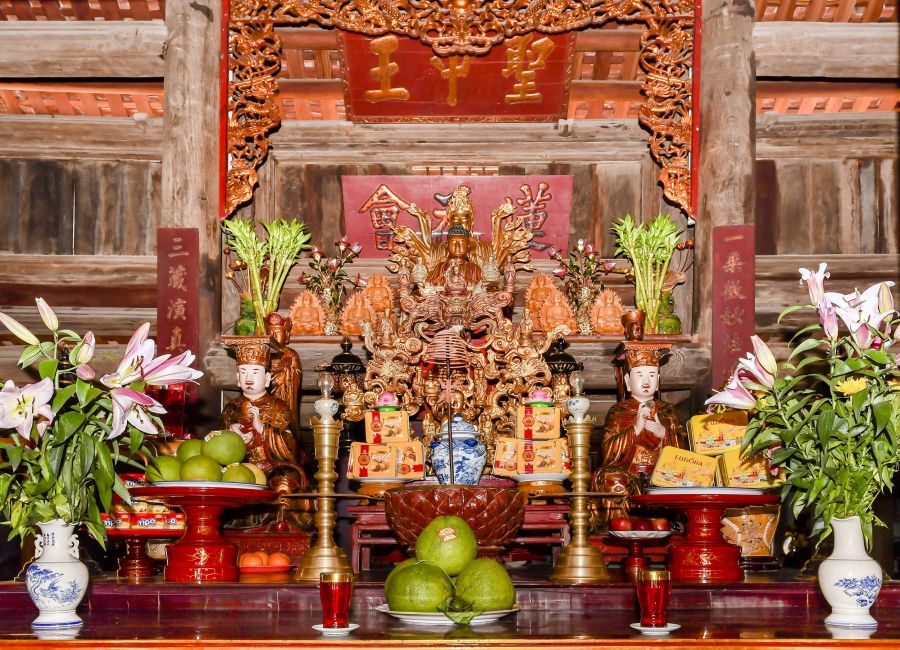
- Location: Tu Hoa Street, Nghi Tam Village, Tay Ho District, Hanoi
Kim Lien Pagoda is located on the banks of West Lake and is one of the oldest and most peaceful pagodas in Hanoi. It was built during the Ly dynasty and reconstructed in the 18th century. It features lovely wooden architecture and a lotus-shaped layout that best illustrates the name “Golden Lotus,” as in the name of this temple itself.
Kim Lien Pagoda is surrounded by trees and peaceful water; it is a sacred place for worshippers and an ideal place for visitors looking for a quiet space. Its wonderful history and charming location make it a spiritual landmark that should not be missed when exploring Hanoi.
Linh Ung Pagoda
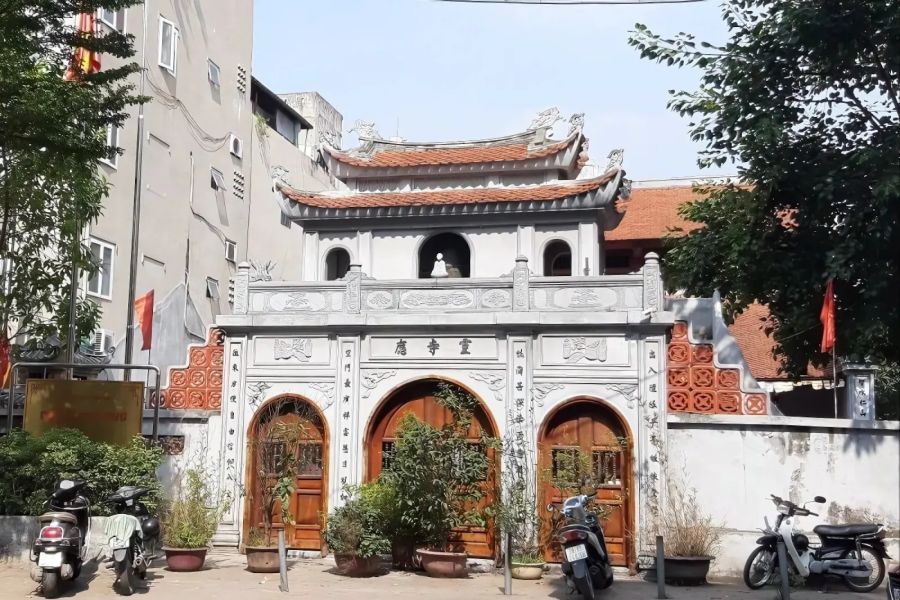
- Location: 290 Kham Thien Street, Tho Quan Ward, Dong Da District, Hanoi
Linh Ung Pagoda, hidden away on Kham Thien Street in Hanoi, will not have the recognition of other, more famous temples in the area; however, it is deeply meaningful for the local population. In traditional Vietnamese architecture, the pagoda is adorned with beautiful altars and offers a peaceful courtyard away from the hustle and bustle of the city.
The pagoda offers worship, reflection, and prayer on behalf of Buddhists who worship in the temple. Visitors arrive, greeted with fragrant incense and the faint ringing of the temple bells – the whole place is sanctified, quiet, and calm. For anyone looking for a moment of calm and imbue with the soul of Vietnam, this will be one of the hidden gems that you ought to visit.
FAQs About Pagodas In Hanoi
Pagodas in Hanoi are an important part of immersing yourself in the rich culture and spiritual traditions of the city. Below are some of the most commonly asked questions that travelers look for when planning their trip to Hanoi.
1. Do I have to pay an entry fee to visit pagodas in Hanoi?
Most pagodas are free to enter. However, pagodas such as the Perfume Pagoda or the Vietnam Buddhist Culture Centre usually have a small entrance or maintenance fee that people will need to pay.
2. What do I wear when I visit a pagoda in Hanoi?
It’s wise to dress modestly. Make sure what you are wearing covers your shoulders and knees. You should also try to avoid wearing shorts, sleeveless tops, and tight outfits to show respect to the spiritual location.
3. Are Hanoi’s pagodas open during holidays like Tet?
In fact, yes, many pagodas remain open for Tet and national holidays. These are actually some of the busiest times as people want to go pray for their health and luck in the new year.
4. Can tourists partake in traditional rituals when visiting the pagodas?
Tourists can absolutely respectfully observe or lightly partake in rituals like offering incense or silent prayer. Just remember to always take cues from others and don’t hesitate to ask politely to clarify.
Final Thoughts
Pagodas in Hanoi are not just places of worship, but portals to the heart of the city. From the ancient pagoda Tran Quoc Pagoda on West Lake to the distinctive One Pillar Pagoda, each one offers a little slice of peace and a peek, first-hand, at the long cultural tradition of spirituality in Vietnam. Let Seni World take you on the spiritual experience of temples in Hanoi, while opening up some hidden sacred treasures too.








